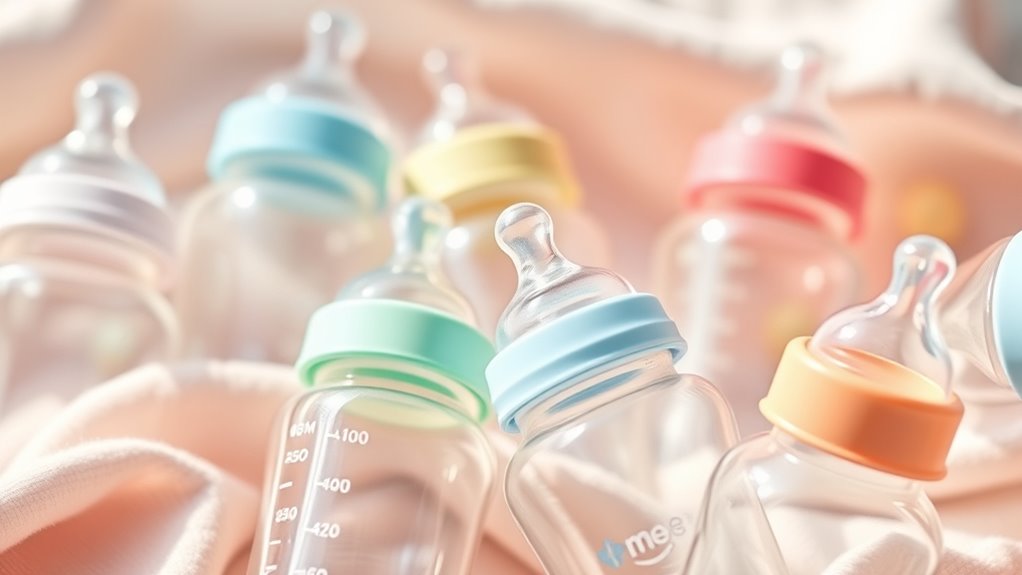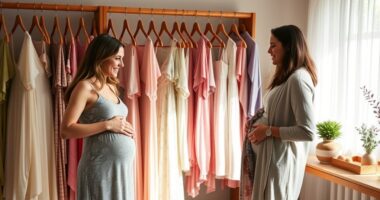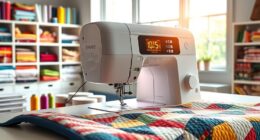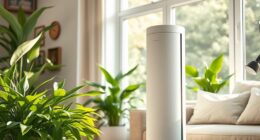BPA-free baby bottles are made from plastics like polypropylene, polyethylene, or Tritan, or sometimes glass and stainless steel. While avoiding BPA reduces certain risks, chemicals such as phthalates or antimony may still leach from plastics, especially when exposed to heat or sunlight. Glass and stainless steel options tend to be safer and more durable. Understanding the materials used helps you choose the best bottle for your baby’s safety and the environment—learn more about making informed choices.
Key Takeaways
- BPA-free bottles often use plastics like polypropylene, polyethylene, or Tritan, which may still contain other chemicals like phthalates.
- Glass and stainless steel bottles are safer and more durable alternatives, reducing chemical leaching risks.
- Chemical leaching from plastics increases with heat, sunlight, or prolonged use, raising safety concerns.
- Consider environmental impacts; glass and stainless steel are reusable and eco-friendly options.
- Always follow manufacturer guidelines and avoid heating bottles to minimize chemical leaching and ensure safety.
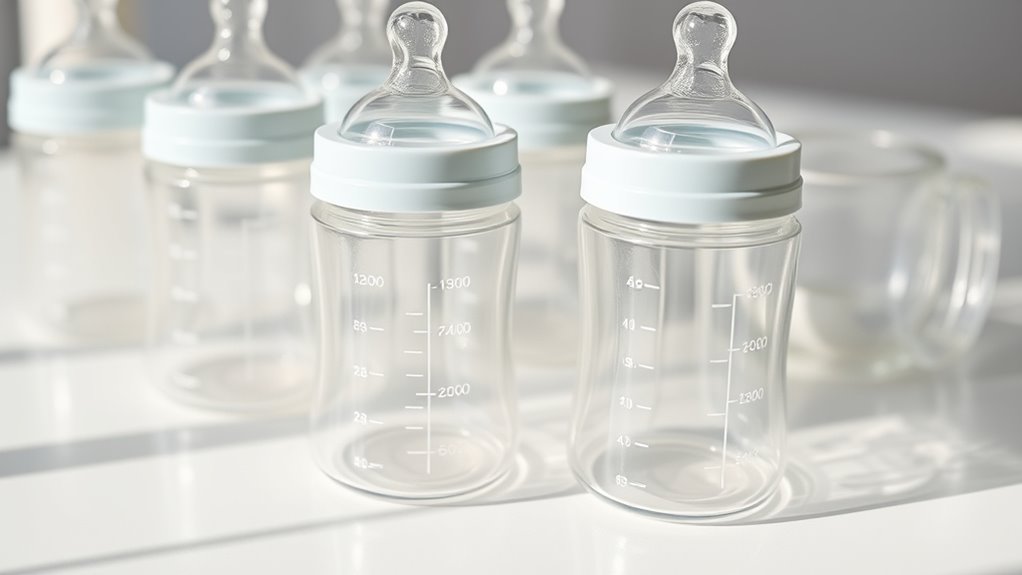
Are BPA-free baby bottles really be the safest choice for your little one? When you’re choosing bottles for your baby, it’s natural to want options that minimize potential health risks. BPA, or bisphenol A, was once common in plastic bottles, but research raised concerns about its possible effects on developing bodies. As a result, many manufacturers now produce BPA-free options, but you might wonder if these bottles are truly safer. One key consideration is chemical leaching. Even if a bottle is labeled BPA-free, it may contain other chemicals that can leach into your baby’s milk or formula, especially when exposed to heat or sunlight. This ongoing concern highlights the importance of understanding what materials are used in these bottles and how they behave over time.
BPA-free bottles are typically made from plastics such as polypropylene, polyethylene, or Tritan, or from alternative materials like glass or stainless steel. While these materials avoid BPA, they aren’t completely free from issues. For instance, some plastics may still contain other chemicals like phthalates or antimony, which could also leach out under certain conditions. This chemical leaching isn’t just a health concern; it also has environmental implications. When bottles are discarded or exposed to heat during sterilization, these chemicals can seep into soil and water, affecting wildlife and ecosystems. Choosing materials that are less prone to chemical leaching and that are environmentally friendly can help reduce this impact.
The environmental impact of BPA-free bottles is another critical factor. Many plastics, even those labeled BPA-free, are not biodegradable and can persist in landfills for hundreds of years. Manufacturing these plastics consumes energy and resources, adding to pollution and greenhouse gas emissions. Glass and stainless steel bottles, while often more durable and reusable, also have their environmental footprints—glass requires energy to produce and can break easily, and stainless steel involves mining and processing. Still, they tend to last longer and are easier to clean thoroughly, reducing waste over time.
Ultimately, choosing the safest option for your baby involves considering both health and environmental factors. BPA-free bottles offer a safer alternative to traditional BPA plastics, but they aren’t entirely risk-free. Be mindful of the materials used, avoid exposing bottles to high heat, and opt for products that are durable and eco-friendly when possible. Additionally, regulatory standards for safety and manufacturing practices can help guide your choices and ensure that the products you select meet certain safety criteria. By doing so, you protect your child from potential chemical leaching and help minimize the environmental impact of your choices. Your careful consideration can make a meaningful difference in your baby’s health and the planet’s well-being.
Frequently Asked Questions
Are Bpa-Free Bottles More Durable Than Traditional Bottles?
BPA-free bottles are generally quite durable, but their durability comparison to traditional bottles varies based on material strength. Many BPA-free bottles made from high-quality plastics like polypropylene or silicone are resistant to cracking and breaking, making them quite durable. However, some BPA-free plastics may be less sturdy over time than traditional glass bottles. You should consider the specific material and brand, as durability depends on both material strength and construction quality.
Do Bpa-Free Bottles Contain Any Harmful Chemicals?
Think of BPA-free bottles as your baby’s high-tech shield, but they can still contain harmful chemicals. Some alternative materials might cause chemical leaching over time, especially when heated or scratched. While these bottles don’t have BPA, it’s possible they contain other chemicals like phthalates or BPS. Always check labels, avoid exposing bottles to high heat, and choose reputable brands that prioritize safety to keep your little one protected.
How Can I Identify if a Bottle Is Truly Bpa-Free?
You can identify if a bottle is truly BPA-free by checking the labeling accuracy and material transparency. Look for labels that clearly state “BPA-free,” and trust brands that provide detailed information about their materials. Avoid bottles with vague claims or no labels. Reputable manufacturers often include certifications or symbols indicating safety standards. Always verify the labeling carefully to guarantee you’re choosing a genuinely safe, BPA-free product for your baby.
Are Bpa-Free Bottles Suitable for Microwave Sterilization?
Yes, BPA-free bottles are generally suitable for microwave sterilization, but you should always verify the manufacturer’s guidelines for microwave safety and cleaning compatibility. Most BPA-free bottles are designed to withstand microwave heat, making sterilization convenient. However, avoid overheating or using the microwave for prolonged periods. Always make certain the bottle is labeled microwave-safe to prevent warping or damage, and follow instructions to keep the bottle safe for your baby.
Do Bpa-Free Bottles Affect the Taste of the Milk or Formula?
BPA-free bottles are like a blank canvas, so they don’t typically affect the taste of milk or formula. You’ll find that taste preservation is maintained, and your little one’s formula mixing stays fresh. However, some bottles with certain plastics might impart a slight odor initially, but this usually doesn’t influence the taste. Regular cleaning and proper sterilization keep everything clean, ensuring your baby’s milk stays pure and delicious.
Conclusion
Choosing BPA-free baby bottles ensures your little one stays safe from harmful chemicals. By understanding the materials and safety features, you’re making a smart choice for their health. Don’t you want to give your baby the best start in life? Investing in safe, BPA-free bottles isn’t just about compliance—it’s about peace of mind. After all, isn’t your child’s well-being worth every effort? Make informed decisions today for a healthier tomorrow.
